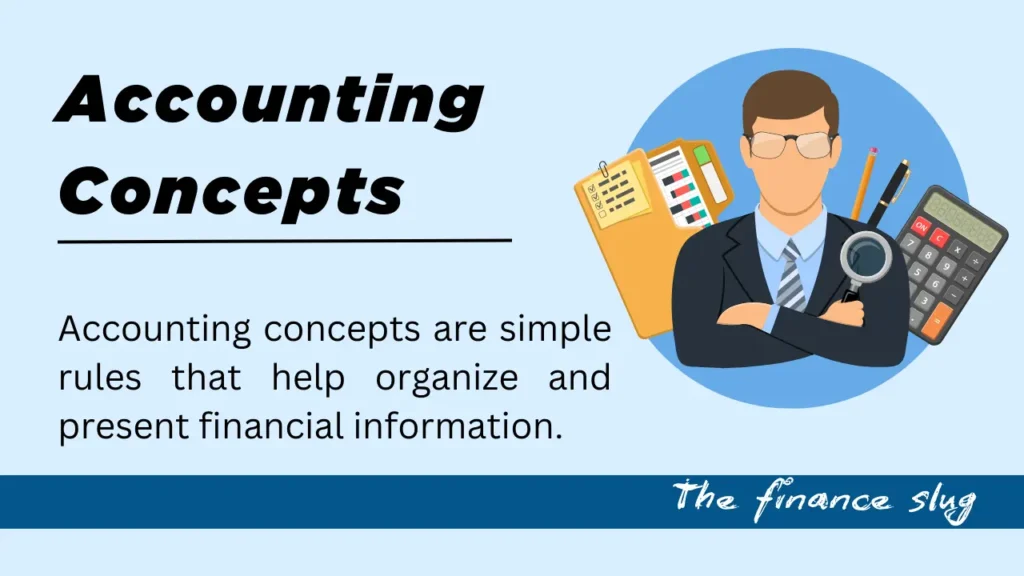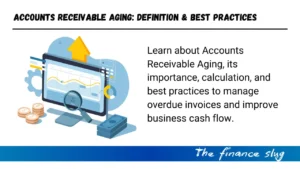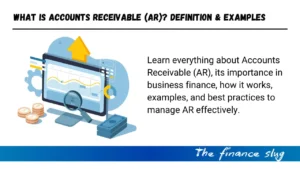
Accounting plays a crucial role in managing finances. It helps businesses and individuals make smart decisions about money. At its core, accounting relies on basic ideas, called accounting concepts, that guide how financial information is recorded, analyzed, and shared.
These concepts create a standard approach that ensures accuracy and consistency. This blog explores these principles in simple terms to help you understand their purpose and practical use.
What Are Accounting Concepts?
Accounting concepts are simple rules that help organize and present financial information. They act as a common language for accountants, ensuring financial statements are reliable and easy to understand.
As The Golden Rule of Accounting ensures balance by applying specific debit and credit rules for personal, real, and nominal accounts. These rules are essential for consistency. They help investors, business owners, and other stakeholders make informed decisions.
Key Accounting Concepts
1. The Business Entity Concept
This concept treats a business as separate from its owner. Financial transactions focus on the business, not the owner’s personal activities.
- Example: If a business owner invests $10,000 in their company, accountants record it as the company’s capital, not the owner’s personal money.
This approach keeps personal and business finances separate, which simplifies financial reporting.
2. The Going Concern Concept
The going concern concept assumes a business will continue operating in the foreseeable future unless there’s evidence it won’t.
- Implication: Companies record fixed assets like machinery at purchase cost, not their current market value, because they expect to use these assets over time.
If a business plans to close, accountants adjust financial statements to reflect this change.
3. The Accrual Concept
The accrual concept states that businesses record revenues and expenses when they occur, not when cash changes hands.
- Example: If a company finishes a project in December but receives payment in January, the income is recorded in December.
This approach gives a clearer picture of a business’s financial performance.
4. The Matching Concept
The matching concept pairs expenses with the revenues they help generate.
- Example: If a business spends money on advertising in July and sees increased sales that month, it records the advertising expense in July.
This principle ensures financial statements are accurate and relevant.
5. The Cost Concept
The cost concept requires businesses to record assets at their original cost, not their current market value.
- Example: If a company buys equipment for $5,000, the financial statements will show that value, even if the equipment becomes more valuable later.
This rule keeps records consistent and avoids subjective estimates.
6. The Conservatism Concept
This principle advises caution when recording financial data. Businesses record losses or expenses as soon as they are anticipated, but they only record revenues when they are certain.
- Example: If a business expects to lose a legal case, it records the potential expense even if the case isn’t resolved yet.
Conservatism ensures financial statements do not give an overly positive view of the business.
7. The Consistency Concept
This concept ensures businesses use the same accounting methods over time.
- Example: If a business uses one method to calculate depreciation, it should continue using that method in the future unless there’s a good reason to change.
Consistency makes it easier to compare financial statements from different periods.
8. The Materiality Concept
This principle focuses on what is important. It encourages accountants to include all significant information in financial statements and leave out minor details that don’t affect decisions.
- Example: Small office supply purchases may not appear in detailed reports, as they have little impact on the big picture.
This keeps financial statements concise and easy to read.
9. The Dual Aspect Concept
This concept forms the foundation of the accounting equation:
Assets = Liabilities + Equity
Every transaction affects at least two accounts, ensuring the books stay balanced.
- Example: If a company borrows $1,000, its cash account increases by $1,000, and its loan account also increases by the same amount.
This rule shows how all parts of the business’s finances connect.
Why Are Accounting Concepts Important?
1. They Provide a Standard Approach
Accounting concepts create a uniform system, making financial statements easy to compare across businesses and industries.
2. They Ensure Transparency
When businesses follow these rules, their financial statements become clearer and more trustworthy.
3. They Support Compliance
Accounting concepts align with global standards like Generally Accepted Accounting Principles (GAAP) and International Financial Reporting Standards (IFRS). Following these standards helps businesses avoid legal trouble.
4. They Help in Decision-Making
Accurate and consistent financial data makes it easier for managers, investors, and other stakeholders to make good decisions.
Challenges in Using Accounting Concepts
While these principles are helpful, they can sometimes be tricky to apply:
- Judgment Calls: Concepts like materiality and conservatism rely on professional judgment, which can lead to differences in interpretation.
- Complex Transactions: Modern business deals often involve complicated financial arrangements, making it harder to stick to simple rules.
- Adapting to Change: Rapid changes in technology and global markets can challenge traditional accounting practices.
Practical Applications of Accounting Concepts
Planning for Growth
Imagine a bakery planning to open a second location. The owner reviews the business’s financial statements to determine if they can afford the expansion:
- The business entity concept separates personal and business funds, making the review accurate.
- The going concern concept allows the owner to plan for long-term investments.
Managing Risks
Consider a tech company facing a possible lawsuit over software issues.
Conclusion
Accounting concepts are the foundation of clear and consistent financial reporting. They help businesses stay organized, follow the rules, and provide useful information to stakeholders.
By mastering these principles, you can gain a better understanding of how businesses track and report their finances. Whether you’re a business owner or just curious about accounting, these concepts will guide you through the basics.
FAQ: Simplifying Accounting Concepts
Found this guide helpful? Share it with friends or colleagues who want to learn more about accounting. Let’s make finance simple and approachable!
Article Sources
- Investopedia – Learn about key accounting concepts and financial strategies.
- AccountingTools – A resource hub for detailed accounting explanations and practical tools.
- The Balance – Explore articles on personal finance, budgeting, and accounting.
- Financial Times – Stay updated on the latest trends and news in finance and accounting.
- Journal of Accountancy – Access professional insights on accounting standards and regulations.
- Accredited Asset Management Specialist (AAMS): Everything You Need to KnowBoost your finance career with the Accredited Asset Management Specialist (AAMS) certification. Learn its benefits, cost & career scope today!
- Accounts Receivable Financing: What It Is & How It WorksLearn how Accounts Receivable Financing boosts cash flow without debt. Discover benefits, risks, and how it works for businesses.
- Accounts Receivable Aging: Definition, Importance & Best PracticesDiscover Accounts Receivable Aging, its importance, calculation, and best practices to manage overdue invoices and boost cash flow.
- What is Accounts Receivable (AR)? Definition, Examples & Best PracticesLearn everything about Accounts Receivable (AR), its importance, how it works, and best practices to manage AR effectively for better cash flow.
- Accounts Payable Turnover Ratio: Formula, Importance & CalculationLearn everything about the Accounts Payable Turnover Ratio, its formula, importance, and how it impacts cash flow and supplier payments.







Pingback: Accounting Methods: Accrual vs Cash Accounting - FinanceSlug
Pingback: Ability to Pay Principle: How It Benefits Society in 2025